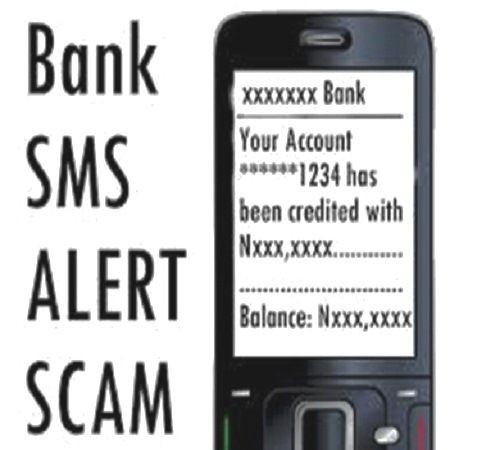You know how back in the day, customized name SMS from a church programme, wedding invitation, club hangouts, or any other programme could be sent out as bulk SMS? Well, this same technology can be used by scammers to send you fake bank alerts.
The significant difference between the bulk SMS methodology and the fake bank alert is the myriad of apps available for creating fake alerts. These apps are readily available on Androids and can be used to carry out these fraudulent acts.
In this article, I will show you how to identify and call out fake bank alerts, which will help you protect your business from fraud. Let’s get into it.
Table of Contents
What is a Fake Bank Alert?
A fake bank alert is a fake or fraudulent notification sent to a receiving party indicating that a payment has been made into their account, when in reality, no such transaction has taken place.
For instance, a customer comes into your business store or premises to make a purchase. Afterward, the customer opted for the transfer option because he or she didn’t come with an ATM card.
The customer acts like he or she is sending you the money via USSD code or bank app, and after a few seconds, you receive a credit alert on your phone. Now, these alerts look precisely like the ones you’ve received from your bank, so there’s no suspicion.
Later in the day, you check your account balance and find that no such transaction occurred. Your balance is still the same. You probably rush to the bank to complain and quarrel with the staff, and they confirm your worst suspicion: you’ve been SCAMMED.
This is exactly how a fake bank alert works. By now, you’re probably asking yourself, “But how is this possible? To answer your question, we’re in the age of technology. Everything and anything is possible. As I stated earlier, there are different Apps available on Google Play Store for generating these fake bank alerts.
Apps like Millionaire Fake Bank Account Pro, Fake Alert Maker, Flash Fund, Money Bank Pro, and Lofty SMS App are all examples of Apps that can be used to carry out this dubious activity.
This is what the fake bank alert would look like if, for instance, you’re using a GTBank account for your business:
GTBank
Acct: 0678234521
Amount: NGN800,000 CR
Desc: USSD-NIPTo John Doe
Date: 4-Nov-2023 12;07
At first, when you see the bank notification, you’d instantly think it’s real because it is similar to the ones your bank always sends to you. But notice how the “available balance’ is missing from the fake bank alert. Yeah, that’s one of the things that gives it away.
With the help of technological advancement, our cashless society has made it easier for fraudulent activities like this to occur. Have you ever fallen victim to this fake bank alert shenanigan? I, for one, have never experienced this, and If you haven’t either, then continue reading to learn how to identify and call out these fake bank alerts.
If you’ve experienced this, you should also read on to learn how to prevent this from happening a second or third time.
Read also: 7 Ways to Earn Money Directly to Your Bank Account in Nigeria.
How to Identify and Call out These Fake Bank Alerts
-
Always check your account balance
You can check your account balance using your mobile banking App, USSD code, or internet banking. Also, look out for the ‘available balance” on the credit alert. This is a huge red flag if the credit alert doesn’t show your current balance. This is one of the critical steps in identifying a fake bank alert.
-
Apart from SMS bank alerts, opt for email bank alerts
Email bank alerts are always safer and more private than SMS bank alerts. Someone can easily access your SMS via your phone’s messaging apps but might not necessarily remember to check your email for bank alerts. Although email bank alerts are prone to hacking, it can’t affect the amount of money in your account. Some banks take precarious steps to hide personal information in their email bank alerts. This protects the account’s owners if their Gmail or any other mail account gets hacked.
Scammers cannot send you emails from your bank’s official email. Even if they send you an email, you can easily detect it’s fake. After you receive a credit alert SMS, you are also advised to check your email. If you don’t have your bank account linked to your email, I suggest you do so.
Read also: How to Grow and Build an Effective Email List for Your Nigerian Business.
-
Request for customer’s debit alert
Although this isn’t ideal for identifying fake bank alerts, it also works. You could always ask for the customer’s debit alert. If his or her debit doesn’t include old ones in one message page, then it’s fake. If that particular debit alert is the only one you see in one message body, it’s probably a fake one.
Some customers might be okay with showing you their debit alert so you don’t see their account balance, but you could always tell them to cover it. As I mentioned above, always check for available balance. Even in your customer’s debit alert. You don’t need to see the exact balance to be sure; you just need to see the “available balance’ option.
-
The Fraudsters will request for your phone number
Nobody needs your phone number to credit your account. So the moment a customer asks for your account details and phone number, he/she is trying to play a fast one on you.
Read also: A Simple Guide to Setting up Google Alerts for Your Business.
-
Be on the lookout for misspellings
A fake bank out will always contain one or two misspelled words. Either your name/surname is misspelled, or your bank name isn’t correct. Sometimes, they even misplace one or two numbers in your account number. Checking for wrong numbers or misspelled words in your credit alert will help you identify fake bank alerts.
Join our WhatsApp community to participate in our enlightening conversations.
Conclusion
You should always pay close attention when dealing with cashless transactions in your business. This will help you protect your business from fraudulent activities which can ruin or destroy the business you’ve built. You could also employ a “no transfer policy” in your business.
This means you have to go for an alternate means of payment apart from cash. You can purchase a POS so that every customer can pay with their ATM card and cash.
Would you love to receive more insightful posts like this? Subscribe to our newsletter so you won’t miss out.
About Author
Latest entries

 Business InsightsNovember 26, 2023How to Identify and Call Out Fake Bank Alert: Protect Your Business From Fraudulent Activity
Business InsightsNovember 26, 2023How to Identify and Call Out Fake Bank Alert: Protect Your Business From Fraudulent Activity FreelancingSeptember 6, 2023Setting up an Escrow Account for your Freelancing Business: A Step-by-step Guide
FreelancingSeptember 6, 2023Setting up an Escrow Account for your Freelancing Business: A Step-by-step Guide LifestyleAugust 4, 202310 Famous Paintings With Hidden Meanings That Will Wow You
LifestyleAugust 4, 202310 Famous Paintings With Hidden Meanings That Will Wow You

